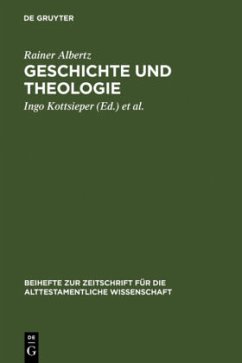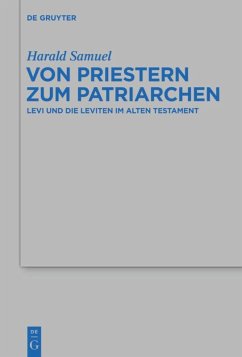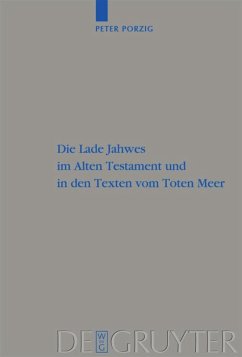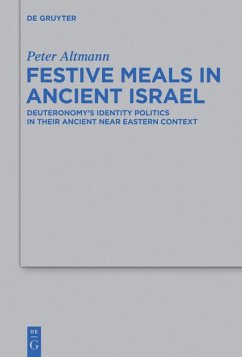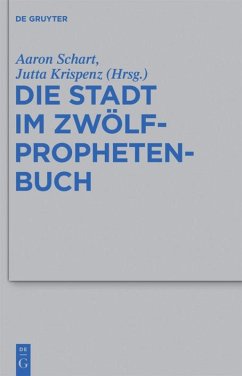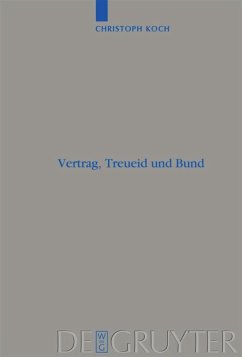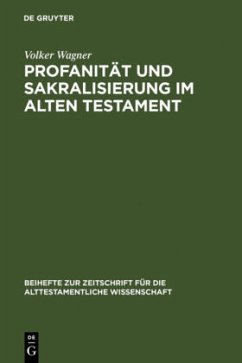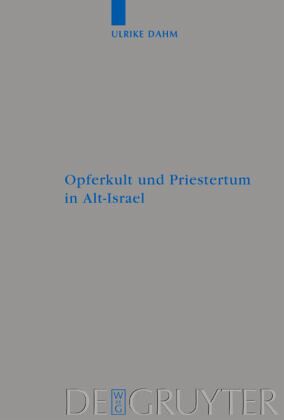
Opferkult und Priestertum in Alt-Israel
Ein kultur- und religionswissenschaftlicher Beitrag

PAYBACK Punkte
0 °P sammeln!
The study examines the ancient Israelite sacrificial cult and the priestly genealogies of the Hebrew Bible from a cultural and historical religious perspective. The first section accesses the collective biography of the Zadokite-Aaronite lineages through genealogical analysis. The beginnings of their office as High Priests can be dated back to the 4th century BC. A multidimensional approach to the Levites can be demonstrated. The second section analyses the sacrificial rites (Ex 12 and Lev 1-7) and shows them to be cultural communication media. The statements and messages of Pesach and other rites are presented. An authorship hypothesis on the basis of cultural anthropological findings concludes this study which proposes a revaluation of the development of the priesthood in the era of the Second Temple.
Die Arbeit untersucht den altisraelitischen Opferkult und die Priestergenealogien der hebräischen Bibel aus religionsgeschichtlicher und kulturwissenschaftlicher Perspektive.
Im ersten Teil wird die kollektive Biographie der aharonidischen Hohenpriesterschaft über Genealogien-Analysen erschlossen. Der Beginn ihres Hohenpriesteramts kann in das 4. Jahrhundert v. Chr. datiert werden. Eine mehrdimensionale Annäherung an das Levitentum läßt sich nachweisen.
Im zweiten Teil werden Opferriten (Ex 12 und Lev 1-7) analysiert und kulturwissenschaftlich als Kommunikationsmedien ausgewiesen. Die Aussagen und Botschaften der Pesach- und anderer Riten werden im einzelnen rekonstruiert. Eine Verfasserhypothese auf Grundlage kulturanthropologischer Ergebnisse schließt die Arbeit ab, die insgesamt Religions- und Machtpolitik (z.B. Entwicklungen zum Monotheismus und zur Theokratie) im nachexilischen Israel neu bewertet.
Im ersten Teil wird die kollektive Biographie der aharonidischen Hohenpriesterschaft über Genealogien-Analysen erschlossen. Der Beginn ihres Hohenpriesteramts kann in das 4. Jahrhundert v. Chr. datiert werden. Eine mehrdimensionale Annäherung an das Levitentum läßt sich nachweisen.
Im zweiten Teil werden Opferriten (Ex 12 und Lev 1-7) analysiert und kulturwissenschaftlich als Kommunikationsmedien ausgewiesen. Die Aussagen und Botschaften der Pesach- und anderer Riten werden im einzelnen rekonstruiert. Eine Verfasserhypothese auf Grundlage kulturanthropologischer Ergebnisse schließt die Arbeit ab, die insgesamt Religions- und Machtpolitik (z.B. Entwicklungen zum Monotheismus und zur Theokratie) im nachexilischen Israel neu bewertet.




